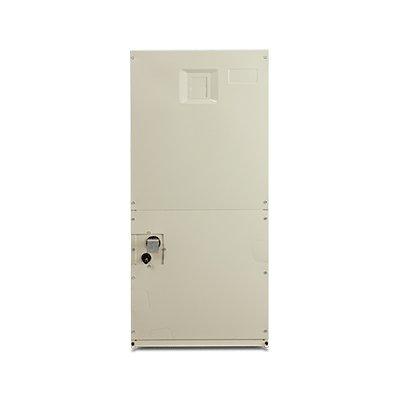Danfoss is supporting the transition to low GWP refrigerants with its new DST G series of A2L refrigerant detection sensors, which feature a revolutionary patented inverted design.
DST G series
As HFC phasedown continues and A2L refrigerants become more widely adopted, the G series of sensors allows building owners and HVAC/R manufacturers to implement these new refrigerants with confidence.
Thermal conductivity provides the best solution for A2L gas sensing. Built with thermal conductivity technology, the DST G series excels in rapid and accurate leak detection, providing the maximum level of safety for use with A2L refrigerants.
thermal conductivity technology
DST G series has undergone rigorous testing in high-humidity environments and under varying temperatures
“The key advantage of building the DST G series using thermal conductivity technology, is that it allows the sensor to accurately re-calibrate itself under a wide range of operating conditions making it the best choice for harsh environments,” explains Laís Miranda de Oliveira, Product Manager at Danfoss Sensing Solutions.
The DST G series has undergone rigorous testing in high-humidity environments and under varying temperatures, and the sensors showed little or no signs of damage.
Automated Self Calibration (ASC)
The sensors also provide a series of self-test diagnostics to monitor sensor health and warn if they’re outside the operation range.
The sensors’ Automated Self Calibration (ASC) adjusts the measurement over time to remove minor drifts and delivers ~0% Lower Flammability Limit (LFL) level in clean air signal.
built-in limit supervision self-test diagnostic
To detect drifts greater than the ASC can correct, the sensors include a built-in limit supervision self-test diagnostic that continuously monitors the measurements. Since the sensors self-calibrate, the error margin is smaller than if it needed to be calibrated by a third party.
“This combination of robustness and accurate calibration makes for an effective technology for detecting A2L gas leaks. And by implementing the inverted sensor design, we’ve been able to further increase the DST G series sensors’ accuracy,” says Laís Miranda de Oliveira.
The inverted design ensures optimal sensor protection
Another key feature of the DST G series is the unique inverted design
Another key feature of the DST G series is the unique inverted design. This design protects the sensors in harsh environments, shielding them from dust, oil, and water spray, and during pressurized cleaning and maintenance in commercial refrigeration units.
All exposed materials are also UV-protected, meaning coils can be cleaned with UV light without damaging the sensor resulting in better indoor air quality for HVAC units.
HVAC and commercial refrigerant applications
The sensors support five different A2L refrigerants and are designed for both HVAC applications (the DST G54B for R454B and DST GR32 for R32 refrigerants) and commercial refrigeration applications (the DST G54A for R454A, the DST G54C for R454C and the DST G55A for R455A refrigerant). Additional refrigerants are also available upon request.
The DST G series of A2L refrigerant detection sensors are the only first step on Danfoss’ gas sensing journey.
More low-GWP refrigerant gas-sensing solutions
With the introduction of the DST G series sensors and the ongoing expansion of the gas sensing platform to be used in the future with other (A3 and CO2) refrigerants, Danfoss has positioned itself as a trustworthy partner for HVAC/R system builders navigating the gas sensing frontier.
Mark Otten, Segment Manager for Cooling and Heating at Danfoss Sensing Solutions, affirms, “The next step will take us to Monterrey, Mexico, where we’re establishing a manufacturing footprint at our Danfoss campus."
reduced transport emissions
Mark Otten adds, "This location places us in proximity to our customers and will make it easier for us to partner with them to develop new gas-sensing technologies. Our local presence will also improve speed-to-market and lead times while reducing transport emissions, so we can effectively meet the market’s increasing demand for sensor technology and support our customers’ growth.”






















